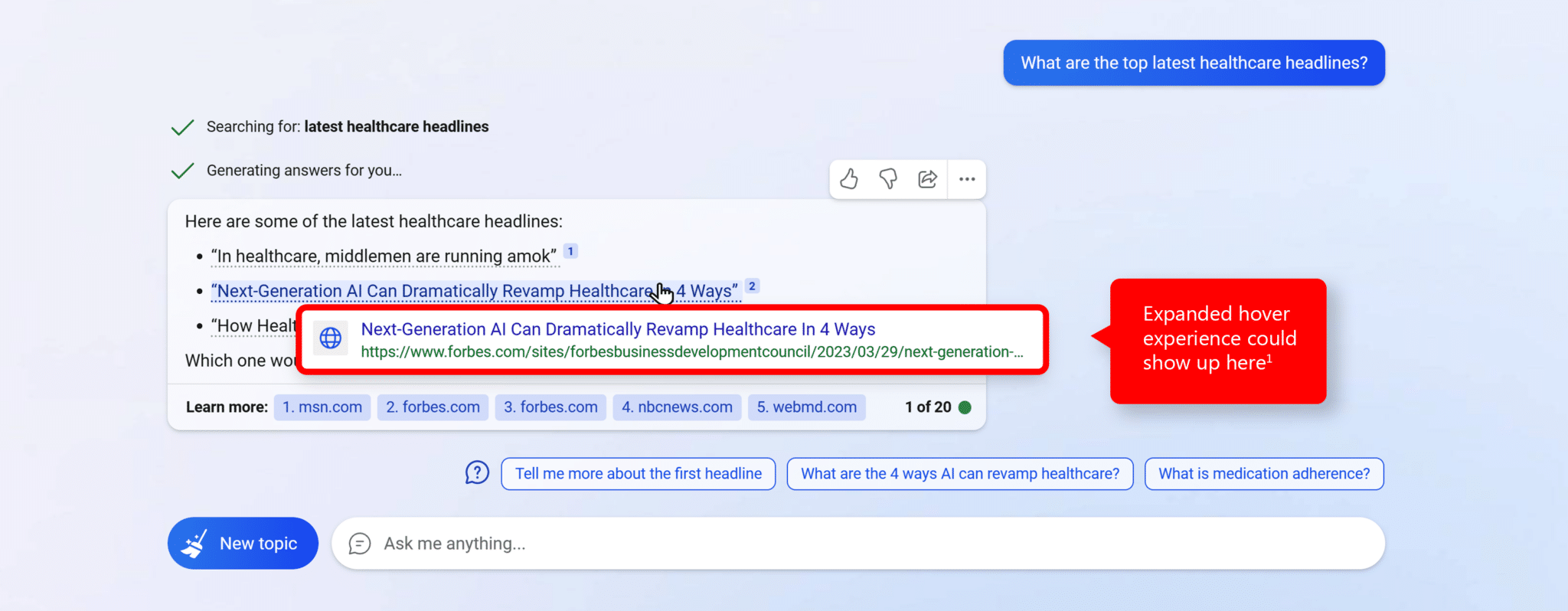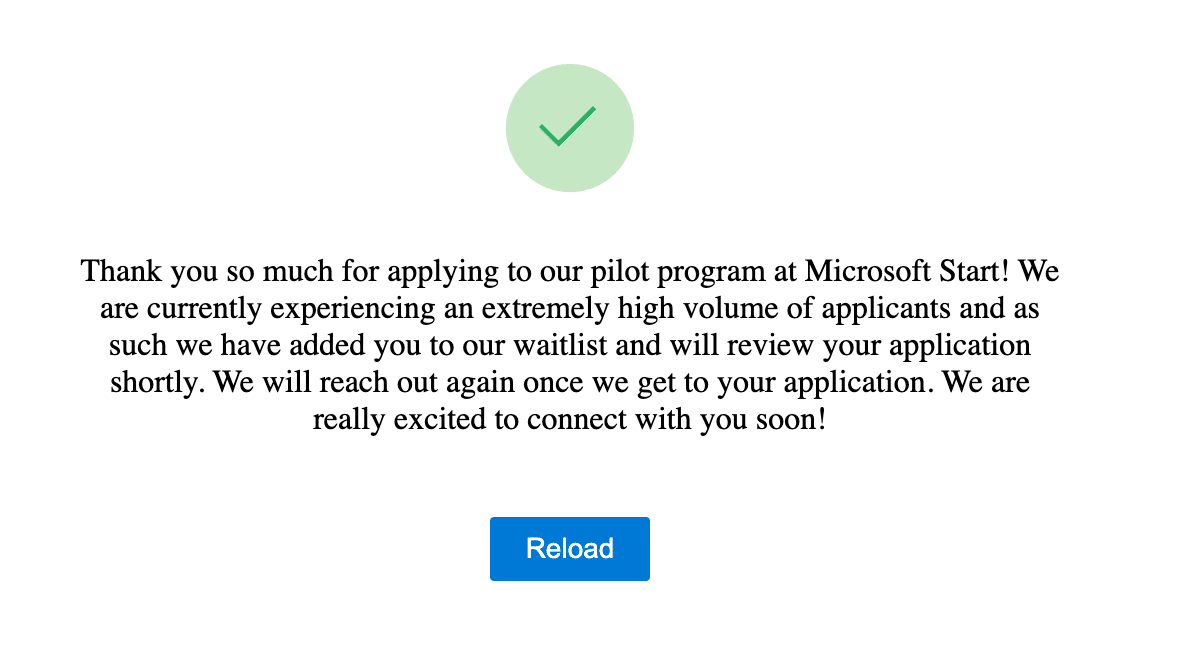Lost in the non-story about Bing adding ads to Chat (ads were already there) was a blog post by Microsoft attempting to assure content creators that the goal of new Bing is to “drive more traffic and revenue to publishers.”
“The Internet works because of an important ecosystem which starts with publishers creating great content which drives traffic and interest by people to consume that content, and then ultimately advertisers that want to reach people in a high quality and targeted environment.”
– Yusuf Mehdi, Microsoft corporate vice president, Modern Life, Search, and Devices, “Driving more traffic and value to publishers from the new Bing“
Mehdi was addressing concerns in the content creator community that search engines that provide results assembled by generative AI (a.k.a., “Chat” and “Answers” in Bing) will upend the ecosystem. The value exchange (content providers creating content in exchange for search engines sending monetizable traffic) will overwhelmingly favor the search engines.
Mehdi admits the concern is widespread by authoring this post. Why else would Microsoft need to assure content creators that things will be better in an AI-driven search results world?
Microsoft knows that content creators – publishers, content marketers, brands, and SEOs – are fretting about the prospect of less traffic and revenue.
Microsoft’s goals are laudable
Microsoft is expressing the best of intentions for all of its constituencies.
Searchers first. “The new Bing is helping to better address people’s search needs with new capabilities like chat, answers, and content creation,” Mehdi wrote.
Microsoft’s vision is to move “beyond search to create your copilot for the Web.” “People are finding value in having search, chat, answers, and creation capabilities all in one experience,” Mehdi wrote.
It’s difficult to argue with putting users first, but that doesn’t ensure that results generated in this way won’t disadvantage content creators.
For publishers, Mehdi said Microsoft’s goals are to:
- Drive more traffic to publishers. Measure success in part by how much traffic is being sent from the new Bing/Edge.
- Increase publisher revenue. Drive more traffic to publishers with new features like chat and answers, and pioneer the future of advertising in these new mediums by sharing revenue directly.
Traffic/revenue for all, more for Microsoft Start participants
Microsoft claims the benefits of adding a chat interface to search will inure to all publishers. But members of its Start program will reap the lion’s share of those rewards.
For all publishers, additional engagement generated by chat and the inclusion of citations in chat results will drive more traffic and create an opportunity for publishers to monetize that traffic.
Microsoft has experienced a traffic gain of about 15% since launching the new Bing. The service has approximately 100 million users and 100 million chats daily, the company said. About one-third of those users are new to Bing; Microsoft concludes those new users are an opportunity for publishers to get more traffic and sell more ads.
Start, launched and in beta September 2021, is Microsoft’s version of Google News or Apple News. It’s a personalized news portal, available as a website or mobile app, where you can manually add or remove interests and content from Start publishers.
Start publishers include heavy-hitters (e.g., The Wall Street Journal, The New York Times, Fox News and USA Today) along with less mainstream publications like Past Factory, The Stock Dork and Neon Moon.
Microsoft is exploring placing ads in chat and sharing ad revenue with Start partners whose content contributed to the chat response.
Traffic-driving tactics for Start members include:
- An “expanded hover experience” where hovering over a link from a publisher will display more links from that publisher, increasing user engagement and driving more traffic to the publisher’s website.
- A “rich caption” beside the chat answer helping to drive more user engagement with the content on Microsoft Start. Users engaging with content on Start will be the catalyst for sharing ad revenue with partners.

Start participation is ‘limited’
Start “participation is limited right now while this program is in beta,” Mehdi wrote. It’s been in beta for 18 months. Publishers/bloggers can apply if they meet these criteria:
- Are based in the U.S., Germany, Spain, France or Italy.
- Post frequently and have an “active content site.”
- Bloggers/non-news content producers generally need to produce five articles or more per month.
- News publishers need to produce a minimum of 10 articles per day, including live/breaking coverage.
- All must use WordPress, Substack, or Medium – or have a website that generates an RSS feed.
- Fiction isn’t permitted.
As for benefits? Microsoft says Start has “millions” of daily users, so it’s good for brand building. You can also earn ad revenue from your content and reader gratuities.
This is the message we received after filling out the “Start” application.

Paying publishers: The Facebook experience
Facebook dabbled with paying news publishers from 2019 to 2022.
The company shelled out more than $100 million to publishers including “more than $15 million to the Washington Post, just over $20 million to the New York Times, and more than $10 million to The Wall Street Journal,” according to a June 2022 WSJ article.
Meta stopped paying U.S. publishers in July 2022, after deciding to diminish the prominence of news in members’ newsfeeds.
Why we care
Microsoft has boldly stated its ambition to double the sales of its ad business to $20 billion in the next several years. Clearly, the company is betting on generative AI to play a role in its ascendance.
Microsoft also knows that it can’t do it alone, and is trying to convince publishers that its vision of a win-win publishing ecosystem will materialize.
At this early stage, who’s to say the brain trust in Redmond is incorrect?
It’s clear that traffic-hungry content creators have to go along with the ride for now. There is no alternative. (Although doubling down on building brand and non-mediated channels like email are wise investments.)
It’s heartening to see Microsoft acknowledge that publishers should be compensated for fueling new Bing, but we’re looking for more transparency on the Start program.
We understand that managing Start is an enormous task, even for a company of Microsoft’s resources. Microsoft’s minimum obligation should be to tell aspiring Start participants more about it. Here are some examples:
- How many applications are being approved each month?
- How many program participants do you expect by the end of this year? 2024?
- Are you committed to publishing a roadmap for the program that informs participants and aspiring participants of plans and progress, e.g., how much traffic are you driving to member sites?
Finally, not mentioning Google’s silence on its vision for the future of content creators would be an omission. Consider it done.
The post Microsoft’s vision for a prosperous content ecosystem in a generative AI world appeared first on Search Engine Land.
No comments:
Post a Comment